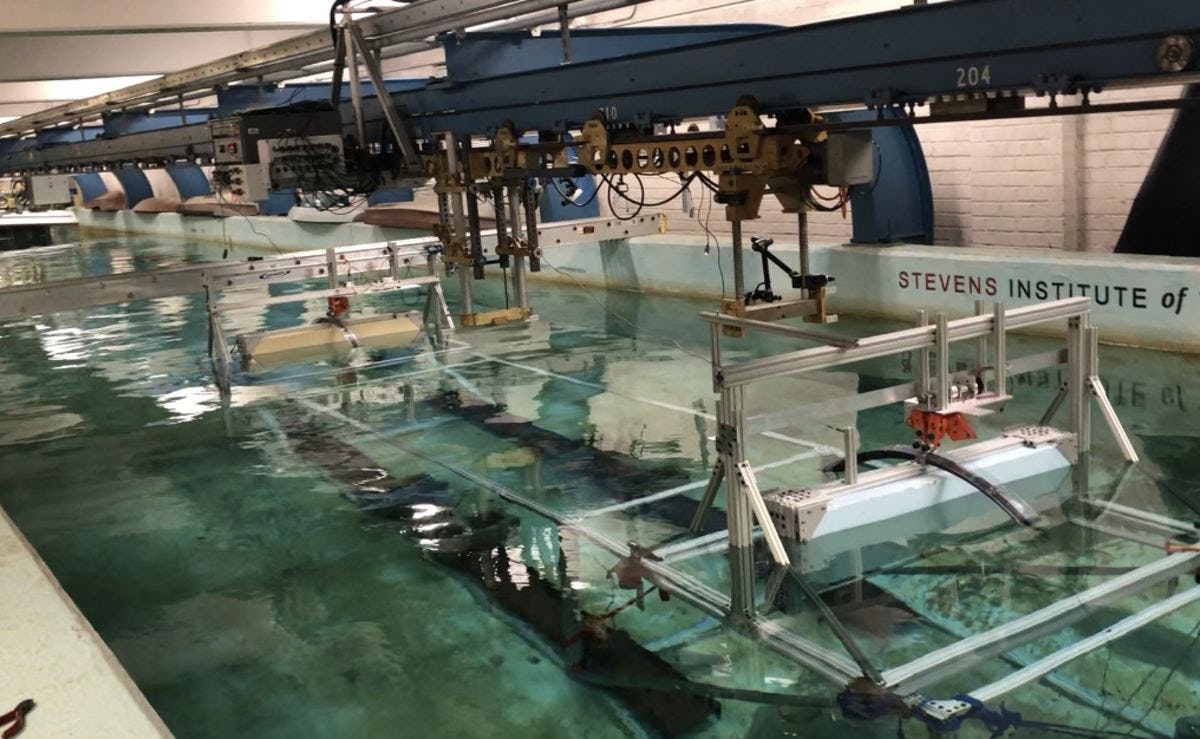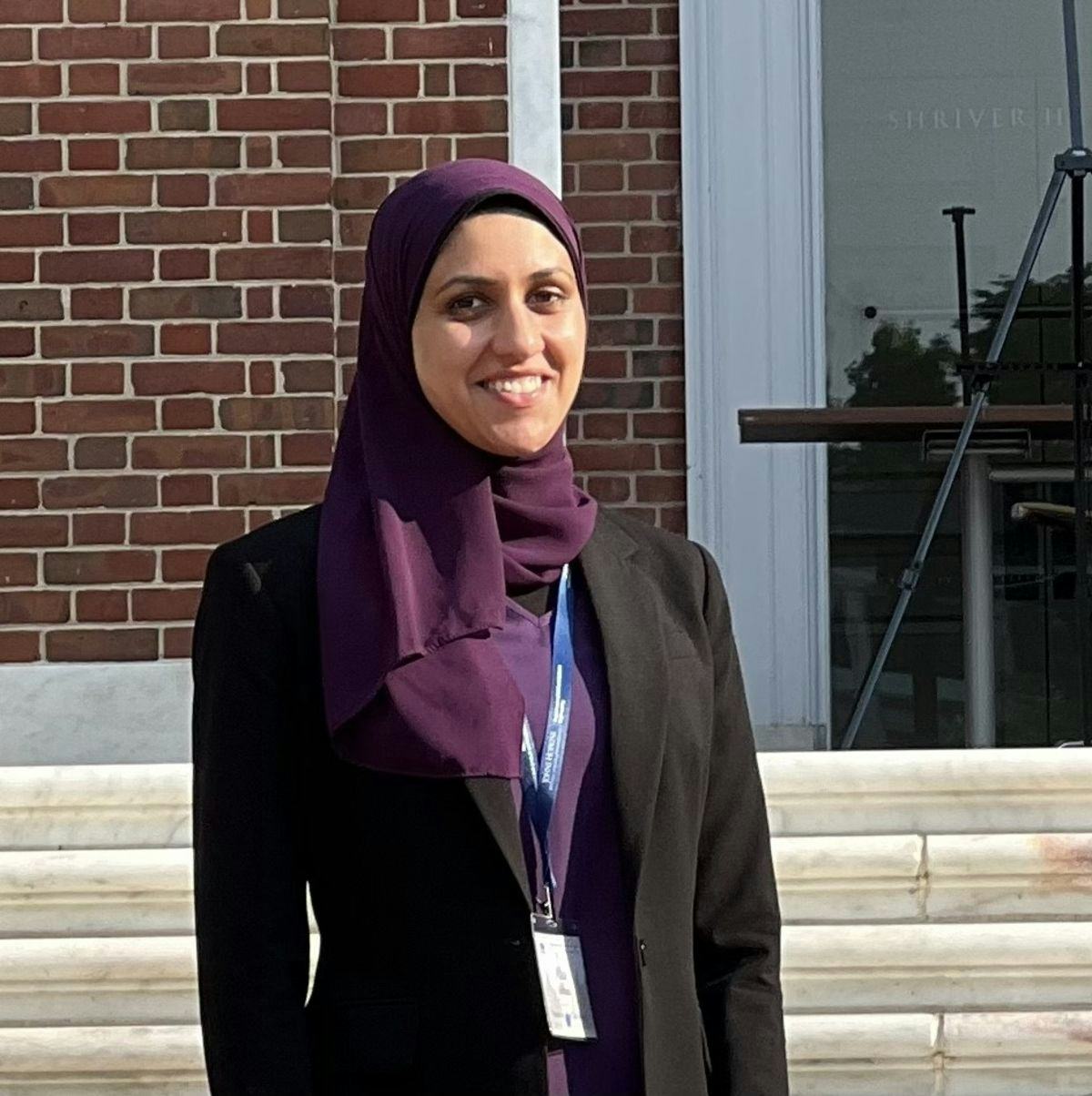A Grant-Funded Ph.D. Project Turns Wave Power into Usable Energy
Ph.D. student Alaa Ahmed ’23 is on the verge of developing transformative technology to generate energy from ocean waves
Alaa Ahmed ’23, a Stevens Institute of Technology Ph.D. candidate and graduate research assistant in ocean engineering, is working with professor and civil, environmental and ocean engineering department chair Muhammad Hajj at the world-renowned Davidson Lab to design and test a new energy converter that turns wave power into usable electricity.
If they’re successful — and, so far, things are looking positive — the new converter will double the energy output of its closest competitor for about 60% of the cost.
The final goal is a super-efficient wave energy converter that could use the energy of ocean waves to power just about anything — from a desalination plant to a coastal community, a remotely located observation station or to connect to the grid.
A perfect match for Stevens and the Davidson Lab
Ahmed completed her undergraduate and master’s work in fluid dynamics in her home country of Egypt. She came to Stevens three years ago, she said, because at Stevens, “you can put what you know into practical use.”
“We don’t have practical research opportunities in Egypt. You can’t validate the concept there, but you can do it here,” she said.
Stevens was an ideal match for Ahmed because it is one of the best universities in ocean engineering and is home to the Davidson Lab, which houses a unique wave tank with the capabilities to test wave energy converters and the means to perform simulations of the full-scale design.
“The tank gives us opportunities to test models and be sure the concept is actually provable,” Ahmed explained.
These tests are also used to validate numerical simulations of the full-scale design, which will make it possible to make a good prediction about the amount of energy the full-scale wave energy converter will produce in a wide range of locations and conditions.
Ahmed is appreciative of the support from staff members in the lab who are helping her with testing.
“They have the tank, a very helpful staff, and we’ve been doing a lot of experiments, making sure the design is correct and reliable,” she said.
While she was eager to pursue her research at Stevens, Ahmed was initially nervous about being away from home.
“But the people here make you feel welcome,” she said. “The professors were very helpful, and on the social side Stevens hosts a lot of events that give you the opportunity to meet new people and make new friends. Even during COVID, they provided a lot of support — spiritual support, virtual events. It was a really good experience, one of the best in my life.
In the lab, Ahmed’s uncertainty turned to confidence with the support of Hajj, who is also Davidson Lab director, and other members of the Davidson Lab team.
“[Hajj] is supportive both personally and academically. He pushes you forward, encourages you, believes in you,” said Ahmed. “That trust in me gave me the push to keep working. He’s a wonderful professor.”
Winning the Link Foundation Fellowship
Ahmed’s research is funded by the Department of Energy and is being conducted in collaboration with Virginia Tech, Sandia National Laboratories and the National Renewable Energy Laboratory. Last year, together with her advisor and other staff, Ahmed put together the application for the prestigious $34,000 Link Foundation Ocean Engineering and Instrumentation Fellowship — and won.
“They said the project is interesting, and I’ll need to submit a report each semester,” she said. “I should be able to finish the project in one year.”
Hajj noted the importance of Ahmed’s contributions to the design.
“Her past experience and abilities have been essential to moving the project forward,” he said. “Ahmed validated multi-fidelity numerical simulations in order to estimate the generation capability of a full-scale system. She was able to develop hydrodynamic models that are important for the control of the power takeoff system. She has also provided the best design for the platform for most efficient wave energy generation.”
The most powerful, most versatile wave energy converter in the world
While there are other wave converters out there, the design developed by Ahmed and her colleagues is specifically set up for deployment in deep waters.
“We have two vertical flaps that are placed on a moving platform in a configuration that reduces the structural loads on the platform. We exploit the wave-induced motion of the flaps to generate energy using a uniquely designed power takeoff system,” she explained.
Once the process of lab testing is complete, Ahmed hopes that the converter will be tested in the ocean. She confidently stated, “We are on the track for success!”



